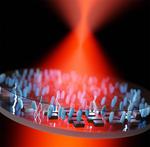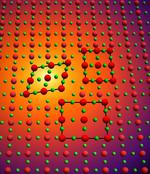Other

“Researchers from Cornell’s School of Applied and Engineering Physics and Samsung’s Advanced Institute of Technology have created a first-of-its-kind metalens – a metamaterial lens – that can be focused using voltage instead of mechanically moving its components. The proof of …

“In 2018, Cornell researchers built a high-powered detector that, in combination with an algorithm-driven process called ptychography, set a world record by tripling the resolution of a state-of-the-art electron microscope. As successful as it was, that approach had a weakness …

“Voyager 1 – one of two sibling NASA spacecraft launched 44 years ago and now the most distant human-made object in space – still works and zooms toward infinity. As the craft toils, it has long since zipped past the edge of …

“The cost of harvesting solar energy has dropped so much in recent years that it’s giving traditional energy sources a run for their money. However, the challenges of energy storage – which require the capacity to bank an intermittent and …

“If you want to build a fully functional nanosized robot, you need to incorporate a host of capabilities, from complicated electronic circuits and photovoltaics to sensors and antennas. But just as importantly, if you want your robot to move, you …

“It’s not a stretch to say that stretchable sensors could change the way soft robots function and feel. In fact, they will be able to feel quite a lot. Cornell researchers have created a fiber-optic sensor that combines low-cost …

“Forget glue, screws, heat or other traditional bonding methods. A Cornell-led collaboration has developed a 3D printing technique that creates cellular metallic materials by smashing together powder particles at supersonic speed. This form of technology, known as “cold spray,” results …

“Like restless children posing for a family portrait, electrons won’t hold still long enough to stay in any kind of fixed arrangement. Now, a Cornell-led collaboration has developed a way to stack two-dimensional semiconductors and trap electrons in a …

“Until now, the history of superconducting materials has been a tale of two types: s-wave and d-wave. Now, Cornell researchers – led by Brad Ramshaw, the Dick & Dale Reis Johnson Assistant Professor in the College of Arts and Sciences – have discovered …

“In 1959, former Cornell physicist Richard Feynman delivered his famous lecture “There’s Plenty of Room at the Bottom,” in which he described the opportunity for shrinking technology, from machines to computer chips, to incredibly small sizes. Well, the bottom …
